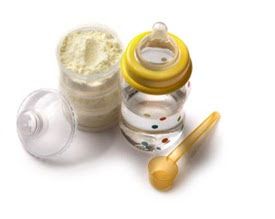 |
| Some species of albatross and shearwaters seem to be the most prone to eating plastic pieces. |
Seabirds Have Plastic In Their Guts
Up to
90% of seabirds have plastic in their guts, study finds
Birds are
eating ‘astronomical’ amount of marine debris they mistake for fish eggs, with
the biggest problem areas near Australia and New Zealand
Associated Press
As many as nine out of 10 of the world’s
seabirds are likely to have pieces of plastic in their guts, a new study
estimates.
An Australian team
of scientists who have studied birds and marine debris found that far more
seabirds were affected than the previous estimate of 29%. Their results were published in the journal Proceedings
of the National Academy of Sciences.
“It’s pretty astronomical,” said study
coauthor Denise Hardesty, a senior research scientist at the CSIRO.
She
said the problem with plastics in the ocean was increasing as the world made
more of it. “In the next 11 years we will
make as much plastic as has been made since industrial plastic production began
in the 1950s.”
Birds mistook plastic
bits for fish eggs so “they think they’re
getting a proper meal but they’re really getting a plastic meal,” Hardesty
said.
Some species of albatross and shearwaters seem
to be the most prone to eating plastic pieces.
She combined computer simulations of garbage and the birds,
as well as their eating habits, to see where the worst problems are.
Hardesty’s work found the biggest problem was not where
there was the most garbage, such as the infamous patch in the central north Pacific Ocean.
 |
| Scientists say marine debris will increase as the world makes more plastic. |
.
Instead it was in areas with the
greatest number of different species, especially in the southern hemisphere
near Australia and New Zealand.
.
Areas around North America and
Europe were better off, she said. By reducing plastic pellets Europe was seeing
less of it in one key bird, the northern fulmar.
Hardesty said she had seen an entire
glowstick and three balloons in a single short-tailed shearwater bird.
“I have seen everything from
cigarette lighters ... to bottle caps to model cars. I’ve found toys,” Hardesty said.
And it is only
likely to get worse. By 2050, 99% of seabirds will have plastic in them,
Hardesty’s computer model forecasts.
That
prediction “seems astonishingly high but
probably not unrealistic,” said American University environmental scientist
Kiho Kim, who wasn’t part of the study but praised it.
RELATED POSTS:
.
.
CLICK HERE . . .
CLICK HERE . . .
CLICK HERE . . .
http://puricare.blogspot.com/2017/03/bpa-in-recycled-toilet-paper-bpa-and.html
.

.

ENDOCRINE
DISRUPTORS
Environmental
Toxins in Drinking Water: Phthalates
CLICK HERE . . .
.
CLICK HERE . . .
CLICK HERE . . .
.
Multi-Media Filter, Highly-Activated Carbon Filter,
Zeolite-Process Water Softener With Brine Tank,
Fiberglass Ballast-Type Pressure Tank
(fully automatic backwash & regeneration)
|
.
PURICARE
Water
Treatment
Systems
.
.
...
Aganan, Pavia, Iloilo, Philippines
...
CLICK HERE . . . to view company profile . . .
Ultraviolet Bactericidal System
with Cartridge Pre-Filters |














No comments:
Post a Comment